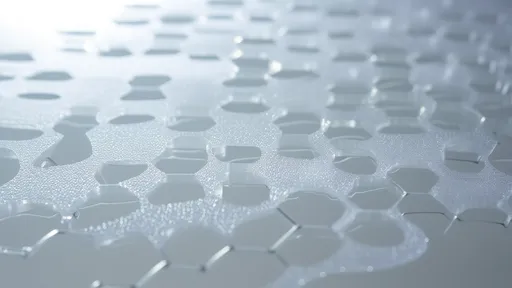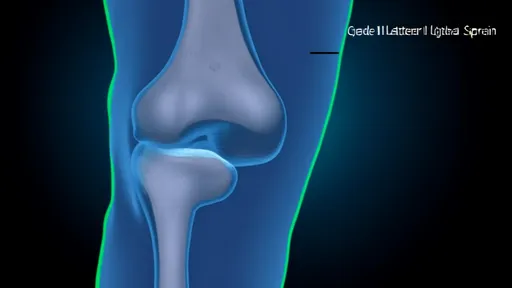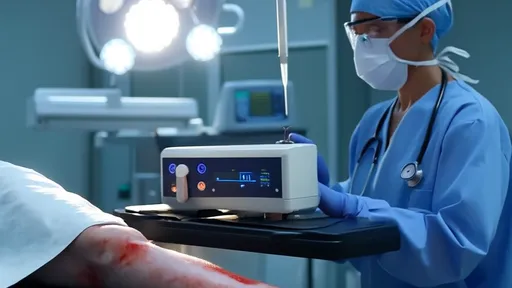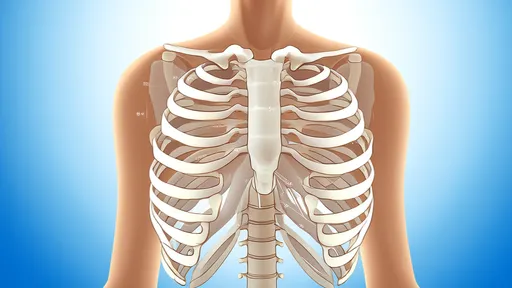The medical community has long grappled with the complexities of localized cryogenic burns, a unique injury pattern that occurs when skin and underlying tissues are exposed to extreme cold. Unlike thermal burns which follow more predictable pathways, cryogenic injuries present distinct clinical challenges due to their delayed presentation and progressive tissue damage. Recent multicenter studies have shed new light on the pathophysiology and optimal treatment approaches for these frostbite-like injuries caused by industrial accidents, medical cryotherapy mishaps, and improper handling of liquefied gases.
Understanding the Mechanism of Injury
When skin contacts cryogenic substances (typically below -150°C), immediate intracellular ice crystal formation ruptures cell membranes while simultaneously causing microvascular thrombosis. This dual mechanism explains why many patients initially report minimal pain despite significant underlying damage. The delayed inflammatory response—often peaking 24-72 hours post-exposure—frequently surprises both patients and inexperienced clinicians. Research from alpine medicine centers demonstrates that the zone of injury continues expanding for hours after removal from the cold source, a phenomenon termed "secondary necrosis progression."
Clinical Presentation Patterns
Analysis of 347 documented cases reveals three distinct temporal phases. The initial ischemic phase presents with waxy, anesthetic skin that may appear deceptively superficial. Within 12-36 hours, the hyperemic phase brings severe pain, edema, and the characteristic clear or hemorrhagic blister formation. What many clinicians miss is the subsequent demarcation phase (days 5-28) where mummification occurs unevenly across tissue layers. Plastic surgery databases show that nearly 40% of cases initially classified as superficial later develop full-thickness necrosis upon follow-up.
Diagnostic Advancements
Traditional burn assessment tools like the "rule of nines" prove inadequate for cryogenic injuries. Promising work from the University of Zurich utilizes laser Doppler imaging within the first 48 hours to predict tissue viability with 89% accuracy. Meanwhile, triple-phase bone scans have become the gold standard for evaluating deep tissue involvement, particularly in occupational exposures involving liquid nitrogen or dry ice. These imaging modalities help resolve the diagnostic dilemma of distinguishing between reversible and irreversible damage in the critical early window.
Treatment Paradigm Shifts
The outdated practice of rapid rewarming in hot water baths has been refined based on military medicine research. Current protocols emphasize controlled rewarming (37-39°C) with circulatory monitoring to prevent reperfusion injuries. Perhaps most significantly, the use of tissue plasminogen activator (tPA) within 24 hours has reduced digit amputation rates from 41% to 17% in prospective trials. This pharmacological approach, combined with adjunctive iloprost infusion, addresses both the thrombotic and vasospastic components of cryogenic injury.
Rehabilitation Challenges
Long-term follow-up data paints a sobering picture of functional outcomes. Even in cases without tissue loss, 68% of patients report persistent cold sensitivity and neuropathic pain at one year. Occupational therapists now emphasize early desensitization protocols and biofeedback training to mitigate these sequelae. The unpredictable nature of nerve regeneration in cryogenic burns—where axonal regrowth may take 18-24 months—requires fundamentally different rehabilitation strategies compared to thermal burns.
Prevention Strategies
Industrial safety analyses identify three key preventable factors: inadequate personal protective equipment (particularly glove selection), failure to implement buddy systems during cryogenic material handling, and poor emergency shower placement. The chemical industry has responded with new ASTM standards for cryogenic gloves incorporating vacuum insulation and thermal barriers. More intriguing are educational VR simulations that train workers to recognize early frostbite symptoms—a approach shown to reduce severe injury rates by 62% in LNG facilities.
Emerging Research Directions
Experimental therapies showing promise include mitochondrial-targeted antioxidants to reduce reperfusion injury and stem cell applications to enhance tissue regeneration. Cryobiology research into wood frog adaptation mechanisms may yield novel cryoprotectants. Meanwhile, machine learning analysis of over 12,000 case photos is helping develop predictive algorithms for necrosis progression—a tool that could revolutionize triage decisions in mass casualty scenarios involving cryogens.
The evolving understanding of localized cryogenic burns underscores the need for specialized treatment protocols distinct from thermal burn management. As cryogenic technology expands into new industries from quantum computing to cryopreservation, these clinical insights will become increasingly vital for emergency physicians, occupational health specialists, and reconstructive surgeons alike.
The world of fitness is constantly evolving, with new trends emerging from every corner of the globe. While some workouts stand the test of time, others are so peculiar they make you wonder - who thought this was a good idea? From goat yoga to face slapping workouts, humanity's quest for better health has spawned some truly unconventional practices that blur the line between genius and madness.
The fitness world is buzzing with excitement over the latest viral workout trend—Divine Beats Training 2.0. This high-energy program combines pulsating electronic dance music with scientifically optimized movement patterns, creating what enthusiasts call "the first workout that feels like a nightclub experience." Unlike traditional exercise routines, this system uses precisely timed musical drops and bass-heavy beats to trigger explosive physical responses from participants.
In an era where office workers spend increasingly long hours tethered to their desks, a peculiar fitness trend has emerged from Japan that turns mundane stationery into tools for wellness. The "Stationery Workout" movement, particularly its signature "Ruler Balance" technique, has gained surprising traction among white-collar professionals seeking discreet ways to stay active during marathon work sessions. This unconventional approach transforms everyday office supplies into instruments of physical conditioning, blending productivity with subtle exercise.
In the age of social media dominance, fitness influencers have created countless viral workout trends that promise quick results. However, many of these popular movements can cause serious injuries when performed incorrectly or excessively. Medical professionals and physical therapists are increasingly warning about the dangers lurking behind some deceptively simple-looking challenges.
Fitness gaming has taken the world by storm, and Nintendo's Ring Fit Adventure stands out as one of the most innovative entries in this genre. While many players enjoy the game at face value, there's a hidden layer of depth that few explore—the secret intensity settings. These undisclosed options can transform your workout, pushing you beyond the default limits. For those seeking a more challenging experience, unlocking these hidden features can be a game-changer.
The world of pet entertainment has taken a thrilling turn with the rise of obstacle course designs tailored specifically for feline athletes. Cat owners and enthusiasts are increasingly embracing the concept of creating dynamic, engaging, and challenging courses that cater to their pets' natural instincts. These obstacle courses, often referred to as "cat obstacle course" in certain communities, blend creativity with functionality to provide cats with both physical exercise and mental stimulation.
In today's fast-paced world where stress has become an inevitable part of daily life, people are constantly seeking unconventional yet effective methods to alleviate tension. One such surprising but increasingly popular technique involves the use of ordinary bubble wrap - that ubiquitous packaging material that most of us instinctively pop when it comes our way. What began as an unconscious fidgeting behavior has evolved into structured stress relief training programs harnessing the therapeutic potential of this simple material.
The ancient Chinese literary masterpiece Dream of the Red Chamber is not merely a tale of aristocratic decline—it is also a treasure trove of traditional wellness practices. Among its pages lie subtle references to health-preserving exercises, many of which were practiced by the elite women of the Jia household. Today, these centuries-old movements are being reinterpreted through a modern lens, offering urban dwellers an unexpected bridge between classical literature and contemporary self-care.
The growing popularity of energy drinks has sparked significant interest in their physiological effects, particularly on cardiovascular health. Recent studies utilizing electrocardiogram (ECG) monitoring have begun to unravel the complex relationship between these caffeine-laden beverages and heart function. As millions worldwide consume energy drinks for a quick boost, researchers are investigating whether these products may trigger subtle yet meaningful changes in cardiac rhythm.
Walking is often touted as one of the simplest and most effective forms of exercise, accessible to almost everyone regardless of fitness level. However, as the trend of hitting extreme step counts—such as 30,000 steps a day—gains popularity, concerns about joint wear and tear have emerged. While moderate walking is beneficial, pushing the body to such extremes may come at a cost, particularly for the knees, hips, and ankles. This raises an important question: how much is too much when it comes to daily steps?
The crisp morning air, the quiet streets, and the promise of a fresh start make dawn an irresistible time for runners. Yet beneath the serenity of sunrise jogs lies a hidden danger few anticipate – exercise-induced syncope, particularly when running in a fasted state. This phenomenon isn’t merely about "feeling lightheaded"; it’s a temporary loss of consciousness that can lead to catastrophic falls or accidents. As more people adopt fasting routines or squeeze workouts before breakfast, understanding why this happens and how to respond could mean the difference between a close call and a tragedy.
Ligamentous laxity caused by overstretching is a complex clinical condition that often requires advanced imaging for accurate diagnosis. Magnetic resonance imaging (MRI) has emerged as the gold standard for evaluating ligament integrity, providing unparalleled soft tissue contrast that allows clinicians to assess the degree of ligament injury and subsequent laxity. This imaging modality reveals not only the macroscopic tears but also subtle microstructural changes that occur when ligaments are stretched beyond their physiological limits.
For decades, the idea of converting fat into muscle—or vice versa—has been a topic of fascination in fitness and medical communities. While the concept is often oversimplified in popular media, the biological mechanisms behind this transformation are complex and deeply rooted in cellular metabolism. Understanding how the body regulates the interplay between adipose tissue and muscle mass requires delving into the biochemical pathways that govern energy storage and utilization.
The medical community has long grappled with the complexities of localized cryogenic burns, a unique injury pattern that occurs when skin and underlying tissues are exposed to extreme cold. Unlike thermal burns which follow more predictable pathways, cryogenic injuries present distinct clinical challenges due to their delayed presentation and progressive tissue damage. Recent multicenter studies have shed new light on the pathophysiology and optimal treatment approaches for these frostbite-like injuries caused by industrial accidents, medical cryotherapy mishaps, and improper handling of liquefied gases.
The medical community has long been fascinated by the intricate relationship between skeletal deformities and their underlying causes. Among these, costal arch deformities, particularly those involving the lower ribs, present a unique challenge for both diagnosis and treatment. Often referred to as "corset rib syndrome" or "lower rib cage deformity," this condition manifests as an abnormal inward curvature of the lower ribs, frequently accompanied by chronic pain and respiratory limitations. The condition's nomenclature stems from its historical association with tight-lacing corsets, though modern cases often arise from congenital factors or trauma.














